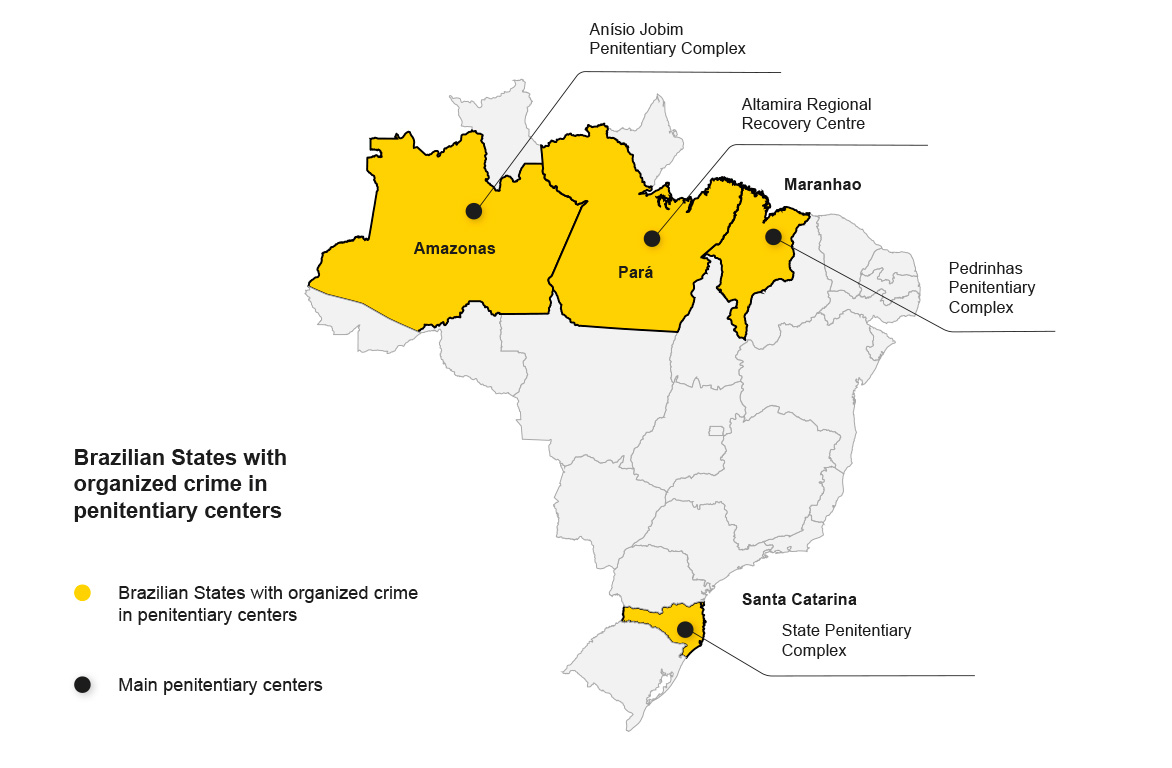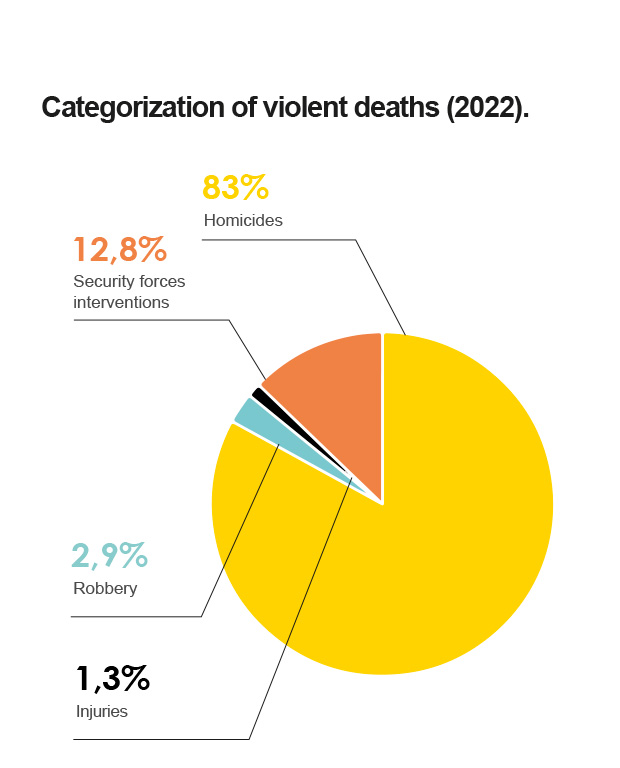Mapping violence in Brazil
10th of March 2022
Violence in Brazil is closely tied to traffic and consumption of drugs and weapons, both considered a national security issues due to its dimensions and its derived violence.
The prominence of criminal organizations within prisons has become more evident due to confrontations between different criminal organizations. Especially in prisons in the north and northeast, but also in southern states, such as Santa Catarina.
These episodes evidenced the importance of the prison system and its central role in a process of dispute for the wholesale and retail market of illicit drugs and weapons, on the routes and in the cities where criminal organizations operate, especially the First Capital Command (PCC), with more than 35,000 members, as well as the Red Command (CV), with more than 30,000 members.
Brazil reached the peak of Intentional Violent Deaths (IVM) in 2017, reaching 30.9 homicides per 100,000 inhabitants. The following years, 2018 and 2019, were for a decrease in homicides. However, in 2020, this downward trend was reversed and there was a 4% growth, compared to the previous year.
On the other hand, it is worth noting that although most homicides, or attempted homicides in Brazil are related to drug trafficking, homicide rates are geographically diverse, mainly due to the different public policies adopted by each state of the federation, as well as by the different socio-political and economic characteristics between states. National data, although very useful for observing national trends, do not reflect the diversity of the states.
Download report
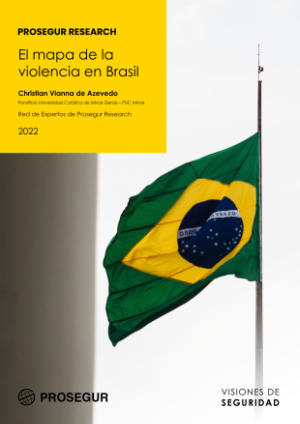
Related posts
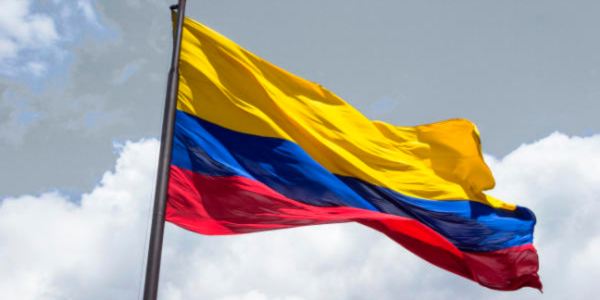
Evaluation of the security context in Colombia
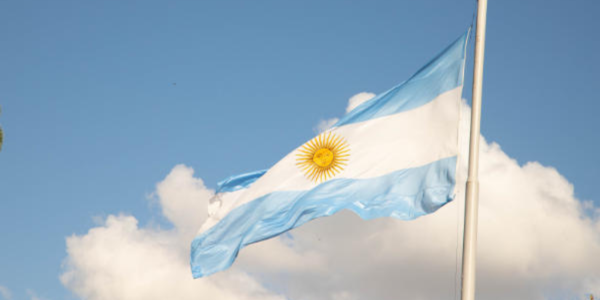
The security panorama in Argentina

